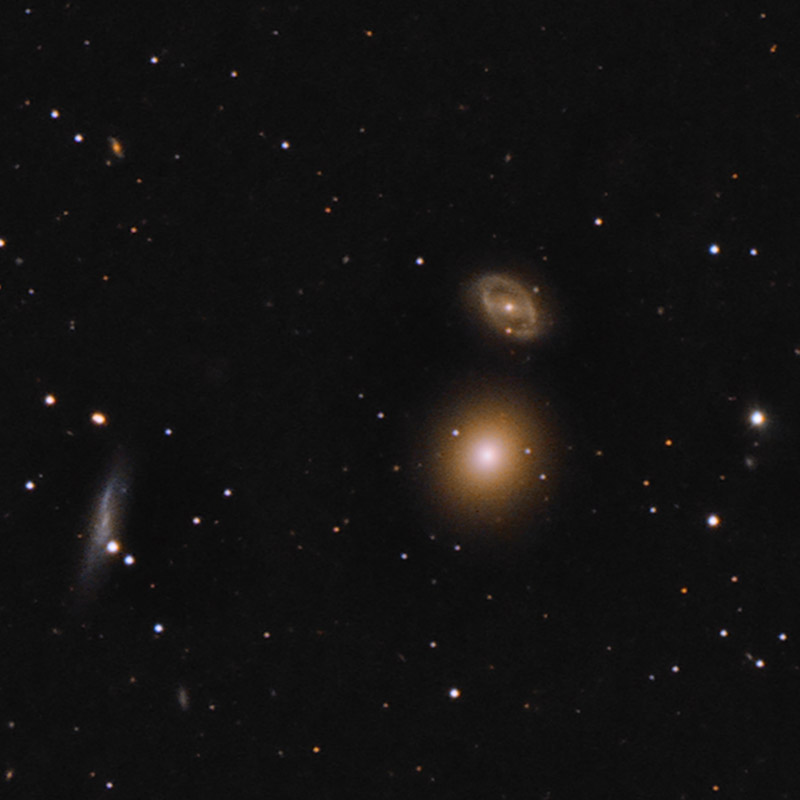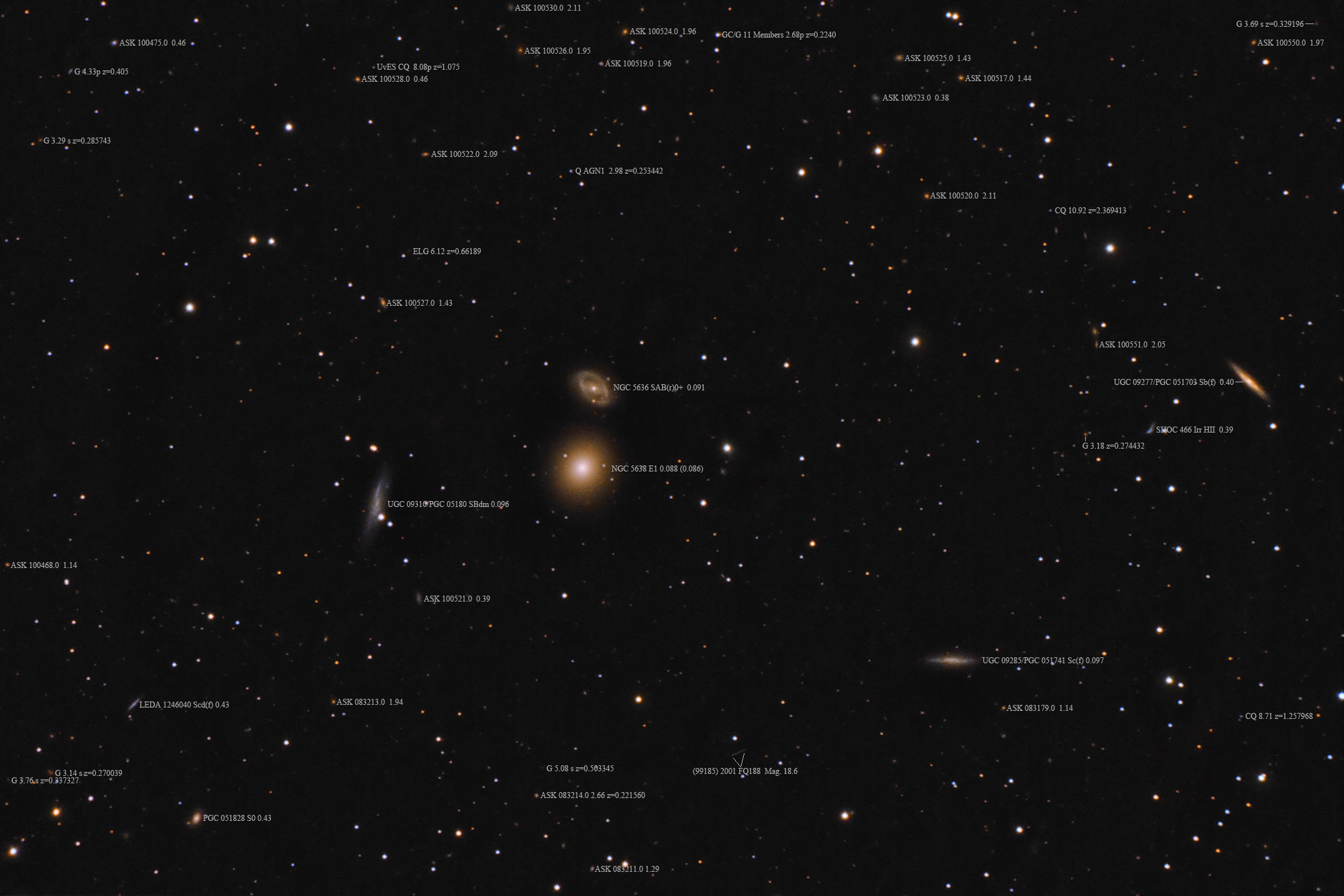| Description | Images |
Object name: NGC5638Designation(s): NGC5638, NGC5636, UGC09277, UGC09285, UGC09310, These two NGC galaxies are located in northeastern Virgo about 90 million light-years away. At one time there was some disagreement as to whether these two were interacting. Now it has been pretty well decided they aren't interacting. I certainly see no indication of it. Both were discovered by William Herschel on April 30, 1786. Only NGC 5638 is in the second Herschel 400 observing program. NGC 5636 appears too faint for the program. Unfortunately, my notes from that got lost in the move to Minnesota. I can't recall if I saw NGC 5636 or not. NGC 5636 is a barred spiral while NGC 5638 a classic elliptical. Both are rather red and dead. I see some hint of new stars in NGC 5636 but not many. Something seems to have killed most star formation in this galaxy. Related Designation(s):2MASS J14283330+0315435, 2MASS J14293901+0315586, 2MASS J14294037+0314000, 2MASX J14283332+0315433, 2MASX J14290373+0308554, 2MASX J14293905+0315583, 2MASX J14294038+0314003, 2MFGC 11742, ASK 083175.0, ASK 100518.0, ASK 100546.0, CGCG 047-057, CGCG 047-058, CGCG 047-062, CGCG 047-063, CGCG 047-065, CGCG 1426.0+0329, CGCG 1426.5+0322, CGCG 1427.1+0329, CGCG 1427.2+0327, CGCG 1427.5+0326, GALEXASC J142903.78+030856.6 , GALEXASC J142940.43+031400.2 , GALEXMSC J142903.83+030856.2 , GALEXMSC J142940.32+031359.1 , GASS 09619, HIPASS J1430+03, HOLM 653A, HOLM 653B, LDCE 1076 NED013, LGG 386:[G93] 014, LGG 386:[G93] 015, LGG 386:[G93] 016, MAPS-NGP O_561_3169934, MAPS-NGP O_561_3172288, MAPS-NGP O_561_3294020, MCG +01-37-015, MCG +01-37-016, MCG +01-37-017, MCG +01-37-018, NGC 5636, NGC 5638, NGC5636, NGC5638, NSA 018048, NSA 018055, NSA 165062, NSA 165082, PGC 051703, PGC 051741, PGC 051785, PGC 051787, PGC 051809, SDSS J142833.30+031543.1, SDSS J142833.31+031543.2, SDSS J142903.88+030856.4, SDSS J142903.89+030856.4, SDSS J142939.01+031558.6, SDSS J142939.02+031558.6, SDSS J142939.02+031558.7, SDSS J142940.37+031359.9, SDSS-g-bar-0107, SDSS-g-box-0029, SDSS-g-eon-0170, SDSS-g-fon-0293, SDSS-i-bar-0112, SDSS-i-box-0040, SDSS-i-eon-0187, SDSS-i-fon-0265, SDSS-r-bar-0098, SDSS-r-box-0042, SDSS-r-eon-0181, SDSS-r-fon-0286, UGC 09277, UGC 09285, UGC 09304, UGC 09308, UGC 09310, UGC09277, UGC09285, UGC09310, USGC U637 NED04, USGC U637 NED05, USGC U637 NED06, USGC U637 NED07, UZC J142833.3+031543, UZC J142904.0+030856, UZC J142939.0+031559, UZC J142940.4+031400, UZC J143001.1+031316, WBL 510-001, WBL 510-002, WBL 510-003, WBL 514:[HIV2012] 0210, WVFSCC J143007+031408, [BEC2010] HRS 316, [HIV2012] 2716, [M98j] 229 NED01, [PVK2003] J217.13878+03.26200 , [TTL2012] 016176, | Permanent link: https://images.mantrapskies.com/catalog/NGC/NGC5638-NGC5636-UGC09277-UGC09285-UGC09310/NGC5638L4X10RGB2X10.JPG |


